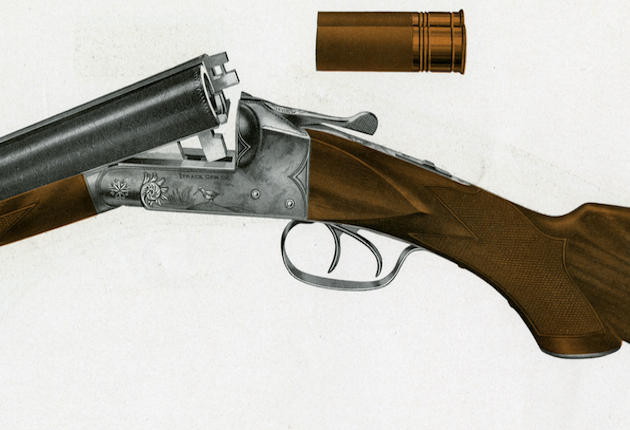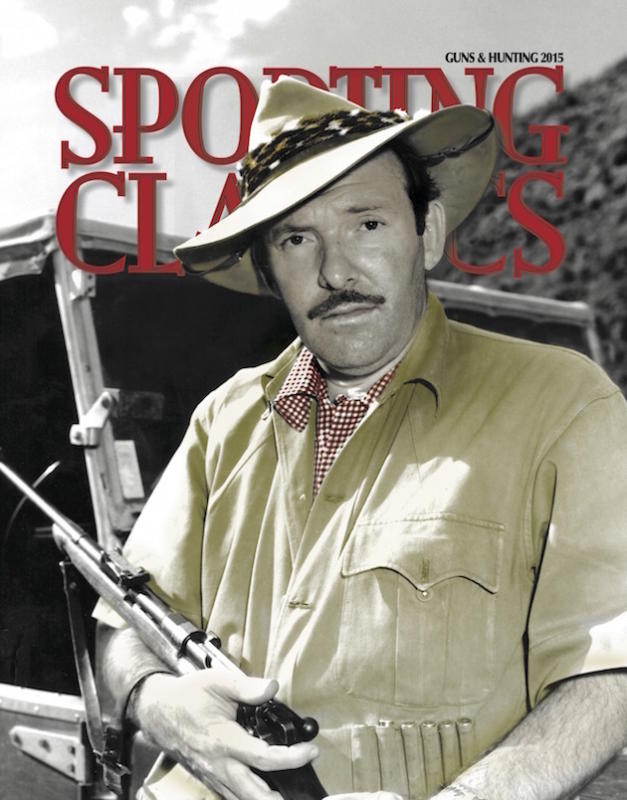The old double guns are swabbed inside and out, ready for the birds, the bucks, and the baying hounds. A fire is hissing, popping, and crackling. Pignut hickory burns hot and clean and the green oak on top will tamp the coals till morning. A cold rain peppers the roofing tin, the wind rumbles in the chimney top, and there is the faintest tinkle of ice in a lead crystal glass. Days getting short, winter on the wind.
Deer season has been open two months already, but nobody messes with them till the first frost slows the snakes and beats back the bugs. But it goes on a good long while, right up till a full hour after sunset on New Year’s Day. Slide on over to Georgia and you got another two weeks. Georgia or Carolina, we hunt Gentleman Bob till it gets too hot for the dogs, and then it’s turkeys in mid-March, if you can stand the chiggers. There is no season and no limit on wild hogs, whatsoever. Should we wish, we can hunt something 365 days a year.
There is a gentility inherent in such a schedule, no need to hunt during hurricanes, floods, or earthquakes, no reason to ignore birthdays, to postpone weddings or funerals. Plenty of time for philosophizing, for woodfires and good whiskey.
Winchester directed John Moses Browning to come up with a repeating shotgun in 1887. Anything seemed possible in those days. America was on a roll, Grover Cleveland was president, and the Morgan silver dollar was good as gold anywhere on earth.
But damn the fine print: Winchester was famous for lever actions and the new gun had to be a lever action, too. In 10 or 12 gauge, the result looked like a Spencer Civil War carbine on steroids, ugly in the extreme, with a lever the average person could not throw from the shoulder and a slippery nubbin of a hammer that maimed good men and bad with equal indifference.
Winchester stubbed its corporate toe again in 1893 with another Browning design, a pump for black-powder shells only. Winchester bought back some 30,000 to stay out of court, exchanging them for the 1897 pump, which could handle smokeless.
Winchester refused Browning’s A-5 three years later, and the president of Remington dropped dead while Browning was waiting to demonstrate his invention. Browning took the A-5 to Belgium and FN eventually turned out over three-quarters of a million, each capable of spitting out five shots as fast as a man could pull the trigger. When Winchester finally got it right with “the perfect repeater,” a lovely little 20 bore in 1912, it would seem the age of the double-barrel gun, a design dating back to the late Renaissance, had finally come to an end.
But no, the Golden Age of American double guns was just beginning.
Between the Armistice of 1919 and Pearl Harbor, Parker, Smith, Ithaca, Fox, Remington, and a host of obscure and forgotten gunworks produced an estimated two and a half million units, butt to muzzle, an imaginary parade of guns from the Platte River to the Rio Grande, all despite the clutches of the Great Depression. They ranged from a Monogram Grade gold-inlayed L C Smith 410, one of only three made, to the common as dirt Ithaca Flues Model field grade 12 gauge, 187,000 strong.
Even Winchester, which started the rush to repeaters, got into the market with its Model 21, producing some 30,000 high-grade guns from 1931 right on up to 1960.
Why? John Olin was former president of Western Cartridge and now president of Winchester and could have any shotgun he wanted, including his own beloved and much coveted Model 12 Pigeon Grade pump. But no, Olin was a competitive shooter who loved double guns. And what’s not to love? A 28-inch barreled double is at least four inches shorter than a 28-inch pump. And the point of balance is neatly between the hands where it belongs. Two shells, secure and weatherproof, two mainsprings, two sears, two hammers, two firing pins. Small wonder African hunters prefer the redundancy of double rifles when bumping up against critters that would happily stomp them straight to Jesus or to hell, whichever direction they were headed…
To read the rest of Roger Pinckney’s article, pick up a copy of Sporting Classics‘ special Guns & Hunting 2015 issue on newsstands October 6, or subscribe today!
To see more by Pinckney, visit his website at rogerpinckney.com.


